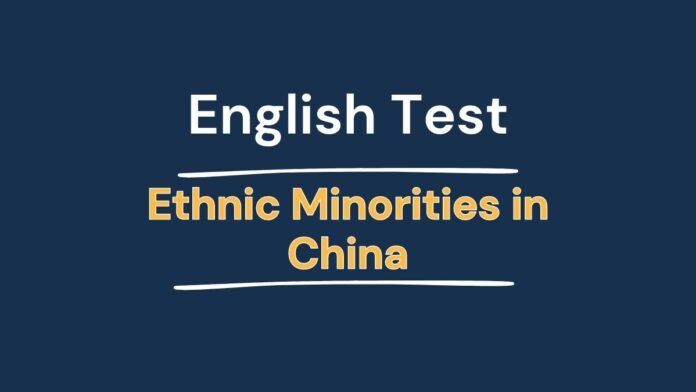1. China is the homeland of 55 official ethnic groups. The largest group, the Han, makes up over 92% of China’s vast population, and it is the Han civilization that the world considers “Chinese culture.” Yet, the 55 ethnic minorities have preserved their own rich traditions and customs, and all are part of Chinese culture. However, those 55 ethnic groups were not easily selected. After 1949 a serious effort to choose real minorities began. At first, there were about 400 minority groups who claimed to be separate groups, but after four years of detailed research and fieldwork, 54 ethnic groups were officially recognized as independent nationalities. A 55th was added in 1979.
2. Those ethnic groups were determined by four elements. The first was a distinct language. A group should have a unique language that is not simply a dialect. Although there were hundreds of Chinese dialects spoken in China, only some were considered languages because they had distinct grammatical and phonological differences from Chinese. Second, a recognized indigenous homeland. A group needed to have land within the national frontiers of China, from which the group originated. The group should also have a native history related to the native land. Third, distinguished customs ranging from dress, marriage rituals, cuisine, religion, and so forth. Finally, to be taken as ethnic minorities, all groups needed to share a strong sense of identity feeling with other members of the group, along with historically perceived friends and enemies among other groups.
I. COMPREHENSION
A. ARE THESE SENTENCES TRUE OR FALSE? JUSTIFY (2PTS)
- The Han is the largest minority group in China.
- There are 400 minority groups in China.
B. READ THE TEXT AND ANSWER THE FOLLOWING QUESTIONS? (2PTS)
- Is China a cosmopolitan society? Why?
- What are the elements that determine an ethnic group?
C. FIND IN THE TEXT WORDS WHICH MEAN THE SAME AS (1PTS)
- Belonging naturally to a place: …………………
- Traditions: ………………
II. LANGUAGE
A. FILL IN THE GAPS WITH THE RIGHT WORDS FROM THE LIST (3 PTS)
Prejudices – stereotypes – autonomy – oppressed – deprived – implemented.
For decades now, Palestinians have been struggling for their ……………., but they haven’t been successful till now. So many laws were introduced, but they were never …….. Now the struggle still continues to win back all the rights they have been …………….. of.
B. REWRITE THE FOLLOWING SENTENCES CORRECTLY (2 PTS)
- The detailed research lasted about four years. The research was conducted by the Chinese authority.
- Ethnic groups needed to have their own historical land. Their grandfathers used to live in that land.
Key Answers to Ethnic Minorities in China
I. COMPREHENSION
A. ARE THESE SENTENCES TRUE OR FALSE? JUSTIFY (2PTS)
- False. The largest group, the Han, makes up over 92% of China’s vast population.
- False. Fifty-four ethnic groups were officially recognized as independent nationalities. A 55th was added in 1979.
B. READ THE TEXT AND ANSWER THE FOLLOWING QUESTIONS? (2PTS)
- Yes, China can be considered a cosmopolitan society because it is the homeland of 55 official ethnic groups, each with their own rich traditions and customs. All of these groups are part of Chinese culture, making it a diverse and multicultural society.
- The four elements that determine an ethnic group in China are a distinct language, a recognized indigenous homeland, distinguished customs, and a strong sense of identity feeling with other members of the group.
C. FIND IN THE TEXT WORDS WHICH MEAN THE SAME AS (1PTS)
- Indigenous
- Customs
II. LANGUAGE
A. FILL IN THE GAPS WITH THE RIGHT WORDS FROM THE LIST (3 PTS)
For decades now, Palestinians have been struggling for their autonomy, but they haven’t been successful till now. So many laws were introduced, but they were never implemented. Now the struggle still continues to win back all the rights they have been deprived of.
B. REWRITE THE FOLLOWING SENTENCES CORRECTLY (2 PTS)
- The detailed research, which was conducted by the Chinese authority, lasted about four years.
- Ethnic groups needed to have their own historical land where their grandfathers used to live.



